Route in Riga’s Old Town (6 kms). 8th September 2024.
A running route in Riga across the beautiful Bastejkalna Park and, if you don’t mind running on cobblestone streets, around the Old Town, seeing landmarks like the iconic BlackHeads House and the Cathedral.
🇪🇪 🇱🇻 🇱🇹 This race is part of what I called our “Baltic Challenge”: We ran in the three Baltic countries over the course of a weekend: 21k in Estonia for the Tallinn Half Marathon and 6k in Latvia, in Riga, both on Saturday, and 10k in Lithuania as part of the Vilnius Marathon races on Sunday. It was super tiring but such a great experience!
TLDR; “too long, didn’t read”
- I just want to run! Take me to RUN.
- I have 1 minute. Take me to USEFUL INFORMATION.
- Running is my excuse for travelling. Take me to TRIP.
- Running is my excuse for eating. Take me to CARBOLOADING.
- I want to know what to read in the plane. Take me to ONE BOOK.
🌍 The trip 📷 and 🏃♀️ The run 🏃♂️: What to see in Riga while running
We had decided on a 5K route that included many of the most popular tourist sites, however, when finally running, we changed the route slightly to see even more landmarks!
The final route is about 6-7K.

Bastejkalna Park
First, we started from our hotel, the “Opera”, next to the train station, enjoying the magnificent Bastejkalna Park.
The park is perfect for running; and we were lucky enough to run on a sunny and warm day, not too hot, not too cold. It was a Saturday afternoon and there were many people relaxing on the grass or doing river cruises on boats. A musician played the soundtrack of “the Godfather” and all around the atmosphere was nice.
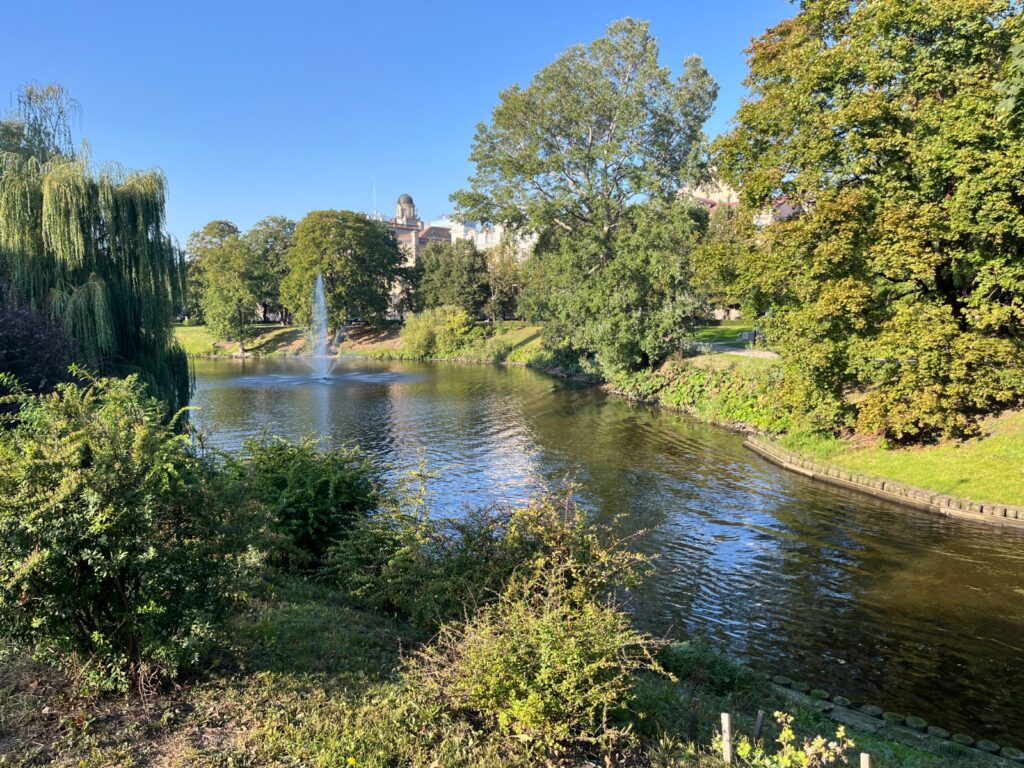
Riga city center looked safe, clean and perfect for running – that is, if you do not mind running on cobblestone streets (but I will get to that later).
In Bastejkalna Park we saw the Opera House and we paused for a picture:
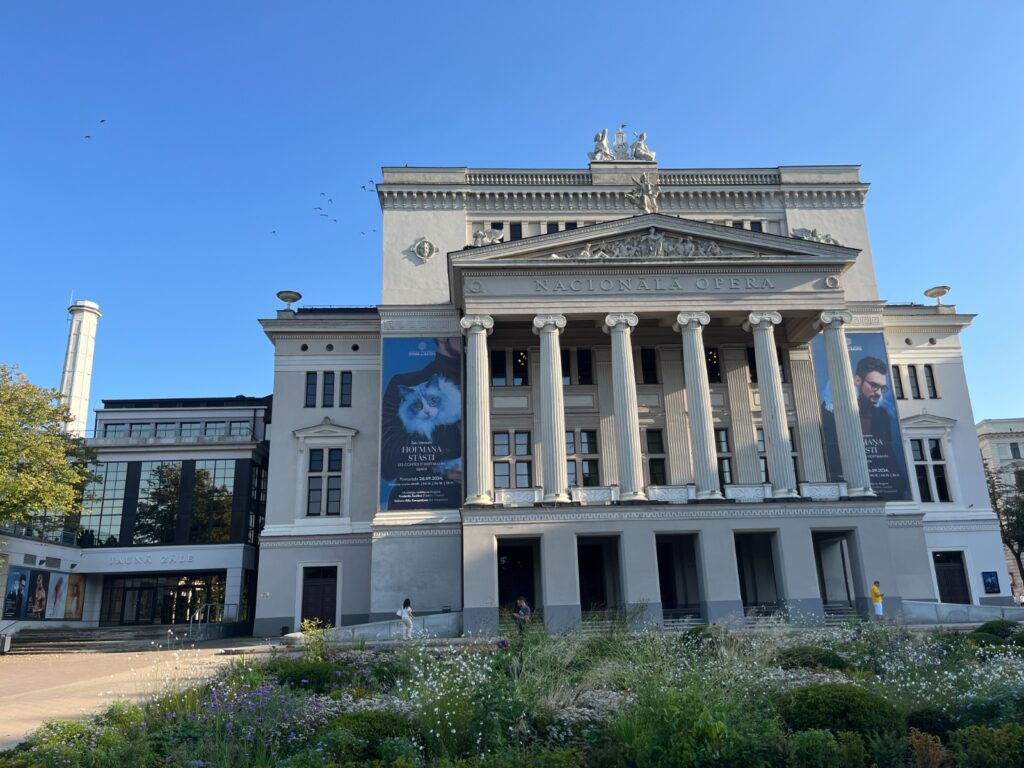
Right around the corner we found the Freedom Monument, where a very nice lady riding a bike offered to take a picture of us. Thank you!
The Freedom Monument is a symbol of Latvian independence and one of the most important landmarks in Riga.

We then headed to the magnificent Nativity Cathedral; at that time of the afternoon, the sun was magically lighting its golden dome. It was truly what now influencers call “the golden hour” 😊
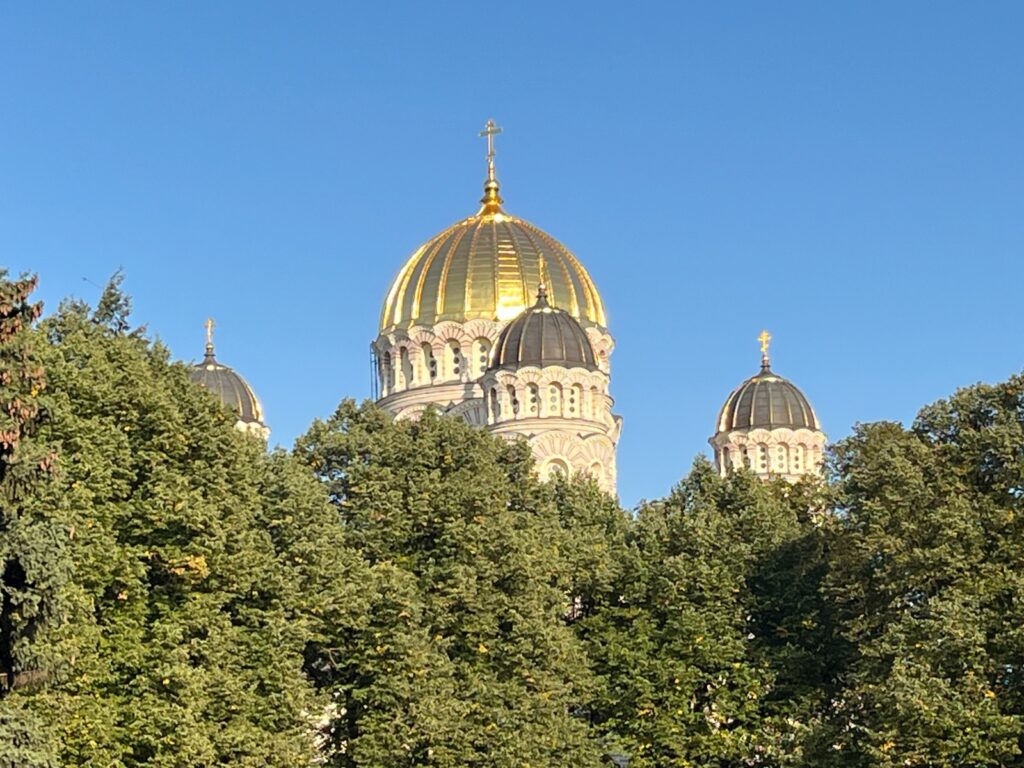
The Nativity Cathedral is a stunning example of Neo-Byzantine architecture. Its golden domes, intricate mosaics, and richly decorated interiors are visually impressive and provide a glimpse into the artistic heritage of the region. The blend of traditional Orthodox design with local influences makes it a unique architectural landmark.
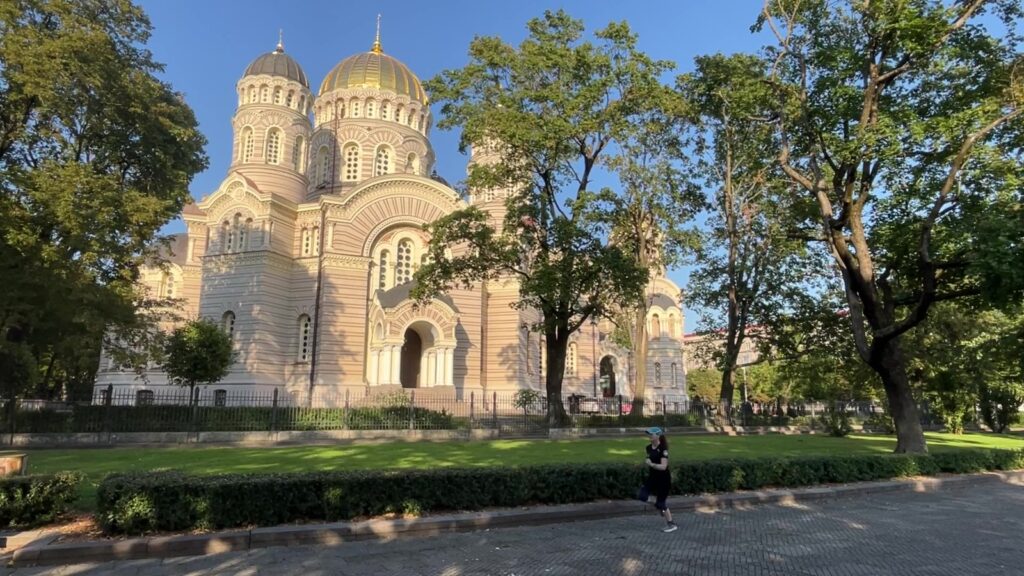
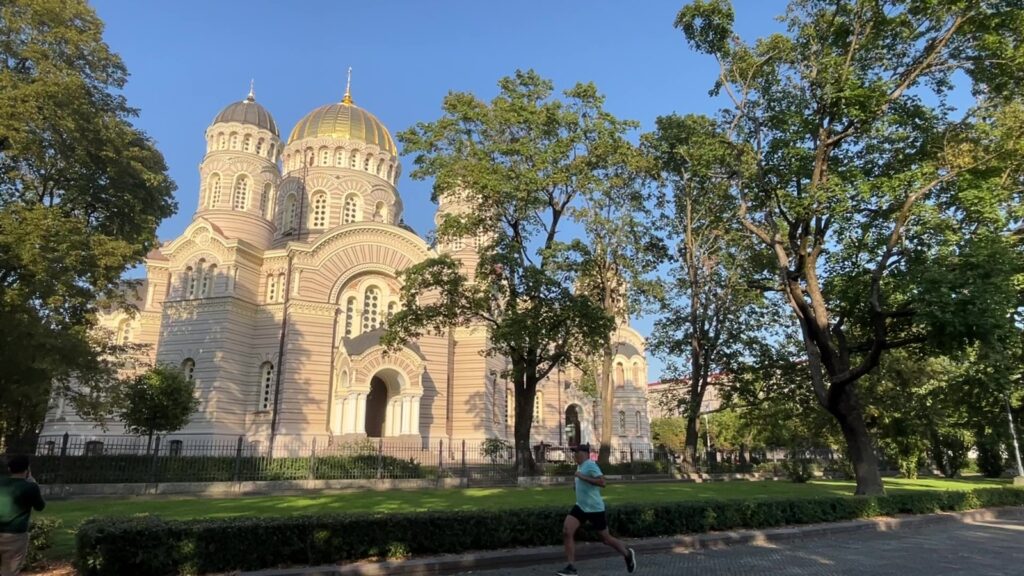
The cathedral, built between 1876 and 1883, has a complex history. It survived the tumultuous periods of World War I, World War II, and Soviet occupation. During the Soviet era, the cathedral was converted into a planetarium and later a restaurant, but it was restored to its original religious purpose in the 1990s after Latvia regained independence. This history adds depth to the experience of visiting the cathedral.
We ran past monuments to poets and enjoyed Bastejkalna Park before heading to the city center.
Riga’s Old Town: Powder Tower and Castle
We exited the park onto Smilšu iela and saw the Powder Tower, a historic tower that’s part of the old city fortifications:
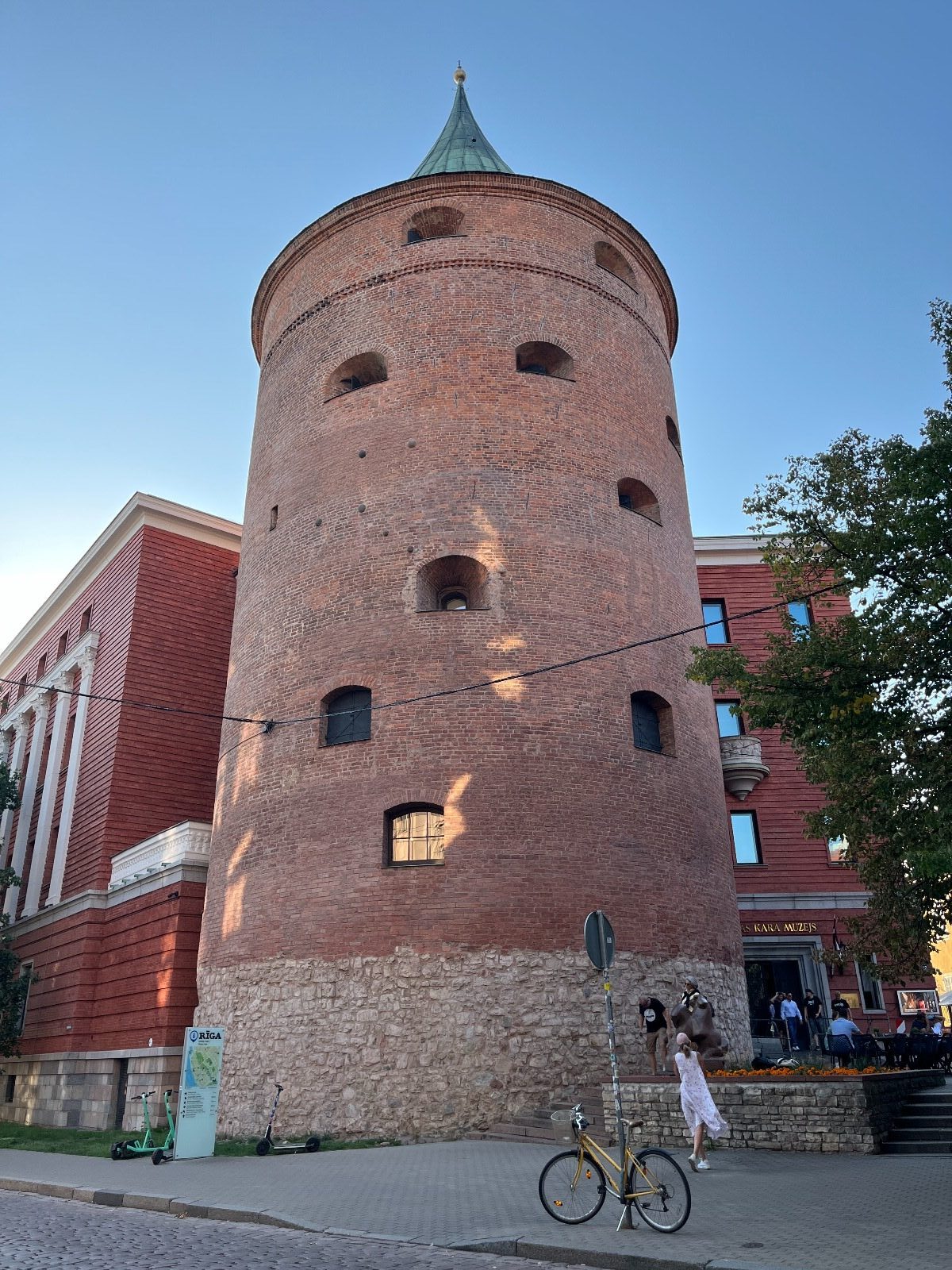
In the city center there were many tourists (nothing compared to Barcelona standards!) and even more locals enjoying their Saturday afternoon with ice creams or just walking around.
There were not enough to make the running difficult (again, like Barcelona), so the only problem we had was running on uneven (very medieval) cobblestone streets.
We did a route of around 4 kilometers, visiting the most famous landmarks.
From the Powder Tower, we ran down Torņa iela, turned right on Pils iela, and headed towards the Riga Cathedral.

This is the largest medieval church in the Baltic states, a gothic marvel, with a beautiful square in front.
We then headed to the Riga Castle, slightly changing our route to see it: when we arrived, dressed up locals were entering mass in the nearby Sāpju Dievmātes Romas katoļu baznīca Church.
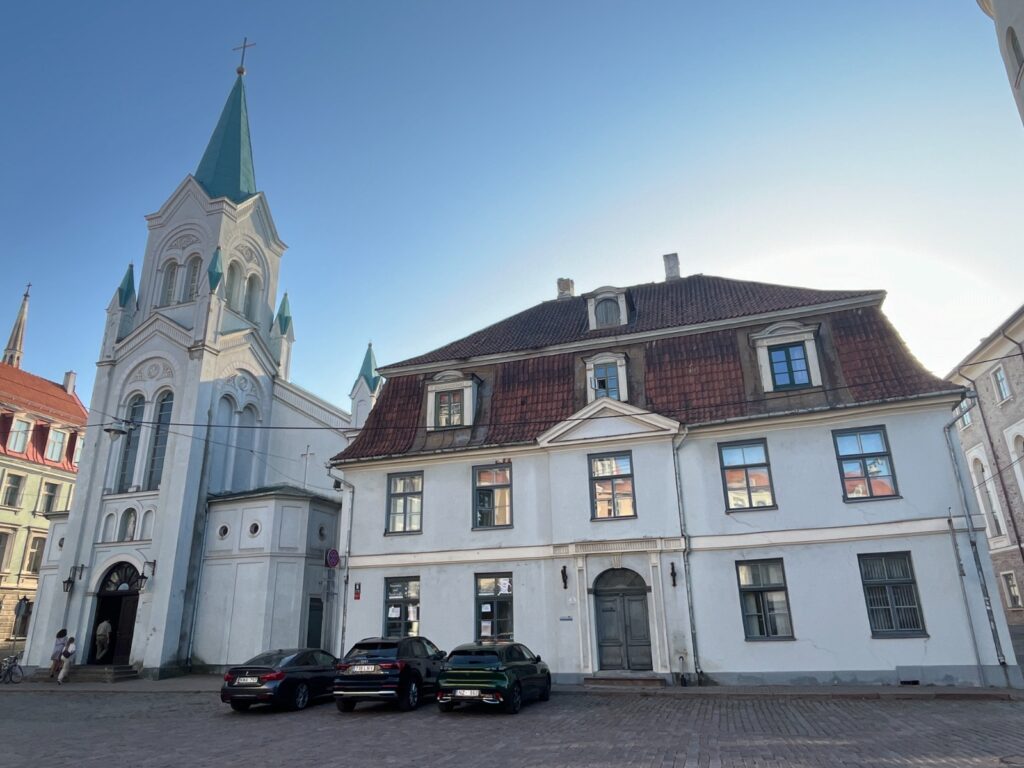
Riga’s Old Town: House of the BlackHeads and St. Peters’s Church
We ran past the “Three Brothers” building. The Three Brothers are the oldest surviving residential buildings in Riga, showcasing different stages of architectural development from the medieval period to the 17th century.
Each house reflects a different architectural style: the oldest (No. 17) has a Gothic design with some Renaissance elements, the middle one (No. 19) is built in a Dutch Renaissance style, and the youngest (No. 21) shows early Baroque influences. Together, they provide a fascinating look into the evolution of residential architecture in Riga.
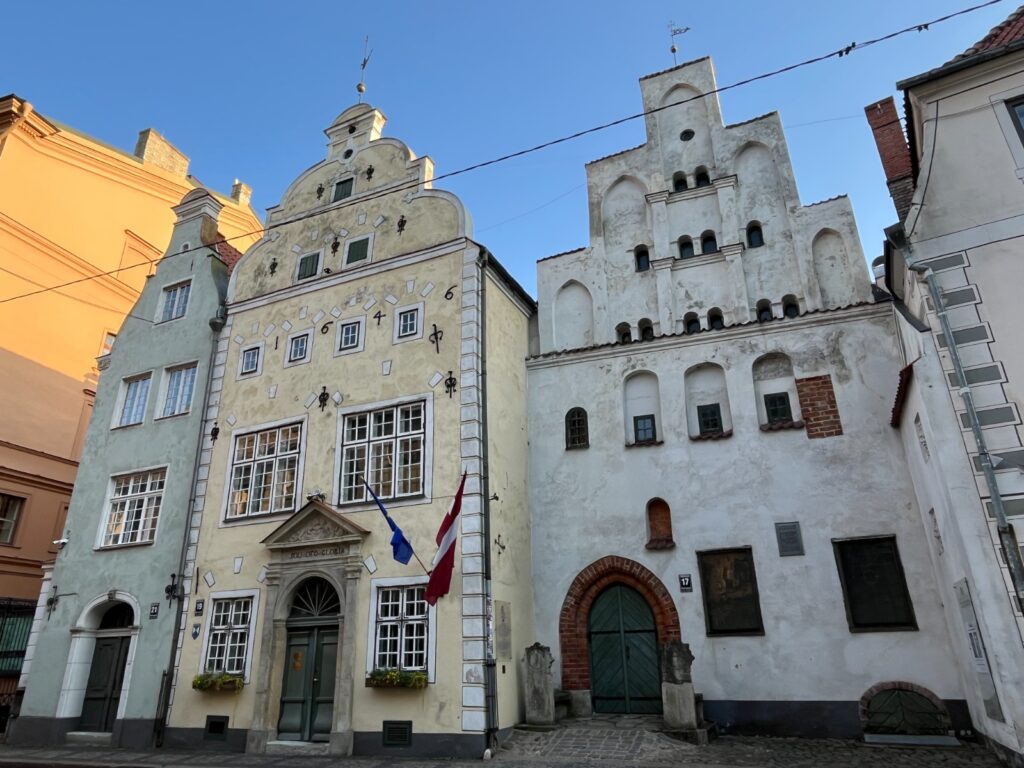
These buildings date back to the late 15th and early 16th centuries and are a testament to Riga’s rich history. They were homes to craftsmen and merchants, representing the life of Riga’s urban population during that time. The Three Brothers also highlight the city’s development as a major trading hub in the Hanseatic League.
After that, we headed to the famous House of the Blackheads, an iconic building in Riga’s Old Town, known for its striking facade. A must-see for any visitor.

Finally, we visited St. Peter’s Church. We entered. There was a young guy playing the piano in its interior. The music, the flowers next to a Martin Luther painting, the atmosphere with candle lights. It was a very atmospheric stop 😊
Btw, we saw flowers everywhere in Riga! From vending machines selling them in the airport to every street decorated with them!
After paying 18 euros (9 euros each), we went up its tall spire, which offers panoramic views of the city. The views were worth it!

We took pictures of other landmarks like the Stalinist style Palace of Science, which really reminded us of the one in Warsaw (which we also visited while running!)
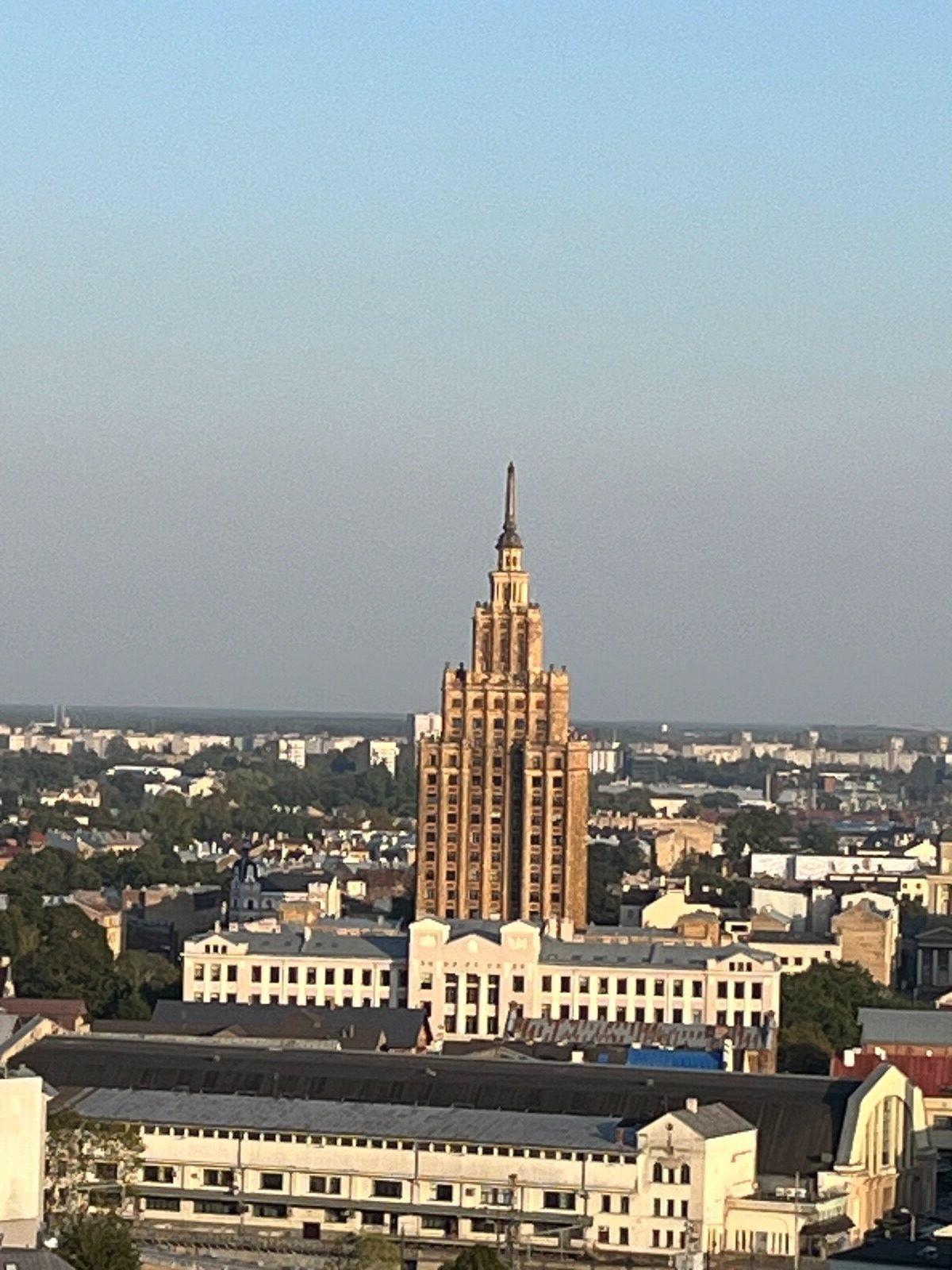
🍜 Carboloading 🍝: What to eat in Riga if you are a runner
Latvian cuisine features several traditional dishes that are rich in carbohydrates. Here are some notable examples:
- Rye Bread (Rudzu Maize): A staple in Latvian cuisine, rye bread is dense and high in carbohydrates. It is often enjoyed with various toppings or as an accompaniment to meals.
- Potato Pancakes (Kartupeļu Plācenīši): Made from grated potatoes mixed with flour, eggs, and spices, these pancakes are fried until crispy and are rich in carbohydrates.
- Potato Casserole (Kartupeļu Dārzs): This dish is made with layers of sliced potatoes, often mixed with meat or vegetables and baked until tender. It provides a hearty carbohydrate component.
- Pīrāgi (Latvian Pastries): These are small, filled pastries that can include fillings like meat, cheese, or mushrooms. The dough used is typically high in carbohydrates.
- Kāposti (Cabbage Rolls): Often stuffed with a mixture of rice and meat, these cabbage rolls provide a significant carbohydrate content from the rice.
And for protein recovery, Latvian cuisine includes several traditional dishes that are rich in protein. Here are some examples:
- Grey Peas with Bacon (Pelēkie Zirņi ar Speķi): This traditional dish combines grey peas, which are a good source of protein, with bacon for added protein and flavor.
- Pīrāgi (Latvian Pastries): These are small, filled pastries that often contain meat such as pork or beef, which provides a good amount of protein.
- Rye Bread with Cheese and Cold Cuts: Rye bread, a staple in Latvia, is commonly served with cheese and various cold cuts, such as ham or sausage, which are rich in protein.
- Roast Pork (Cepta Cūkgaļa): Pork is a common ingredient in Latvian cuisine, and roast pork dishes are rich in protein. It is often served with potatoes or vegetables.
- Latvian Meatballs (Kotletes): These are typically made from ground meat, such as pork or beef, mixed with breadcrumbs, onions, and spices. They are high in protein and are often served with potatoes or rice.

Useful information
🏆 5-7k Running Route in Riga, Latvia, in Bastejkalna Park and the Old Town.
👟 Urban: bring shoes for asphalt.
✅ Beatiful route which allows you to see the main landmarks of Riga (and they are plenty to see!)
❌ The cobblestone streets in the Old Town can be tricky. Plus, it might be difficult to run during the long and harsh Latvian winter. We ran in September and it was perfect.

Map
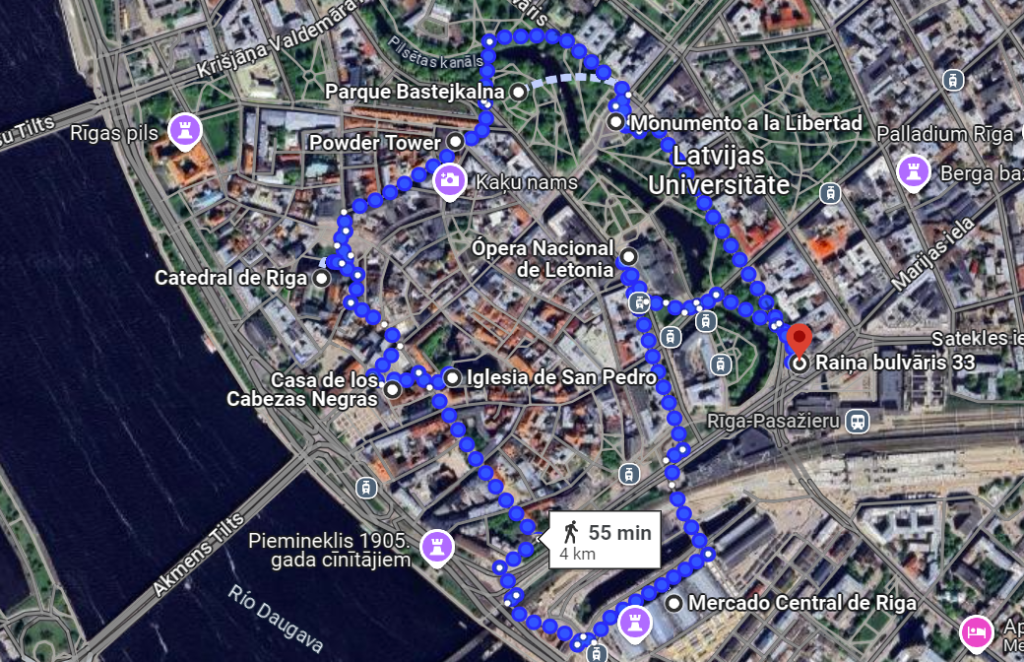
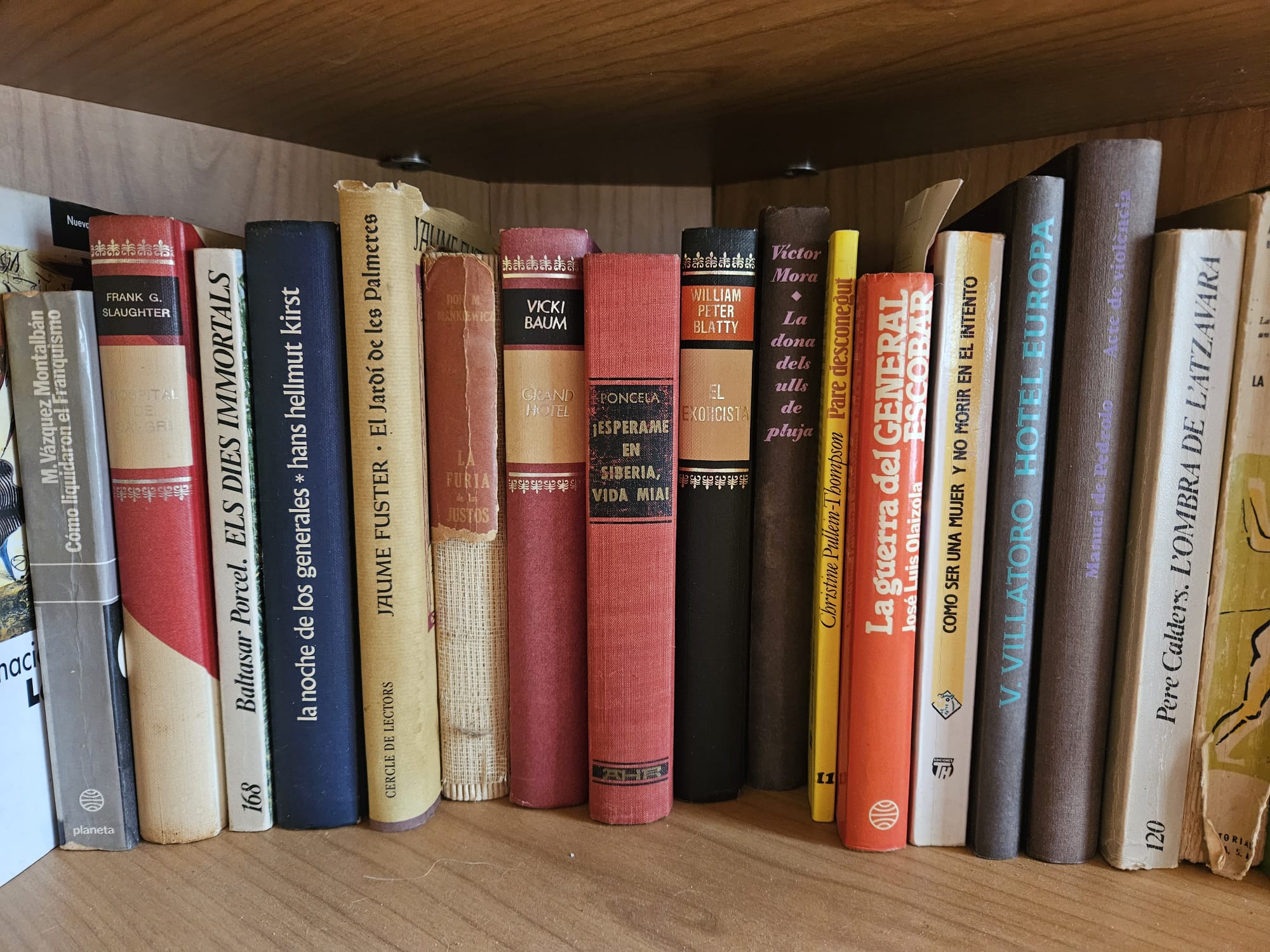
One book
“Soviet milk”, by Nora Ikstena.
A well-known novel set in Riga is “Soviet Milk” by Nora Ikstena. This novel, originally published in Latvian as “Mātes piens,” tells the story of three generations of women in Soviet-occupied Latvia, with Riga playing a significant backdrop to their lives. It explores themes of motherhood, identity, and resistance against the oppressive Soviet regime. The narrative provides a poignant and intimate look at the struggles and resilience of the characters within the historical and cultural context of Riga.

Plot Summary: This novel considers the effects of Soviet rule on a single individual. The central character in the story tries to follow her calling as a doctor. But then the state steps in. She is deprived first of her professional future, then of her identity and finally of her relationship with her daughter. Banished to a village in the Latvian countryside, her sense of isolation increases. Will she and her daughter be able to return to Riga when political change begins to stir?
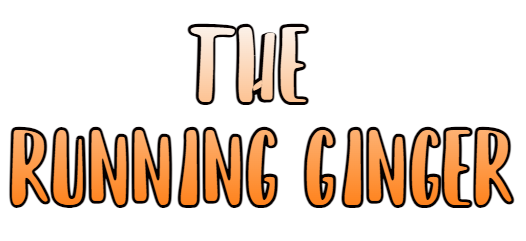
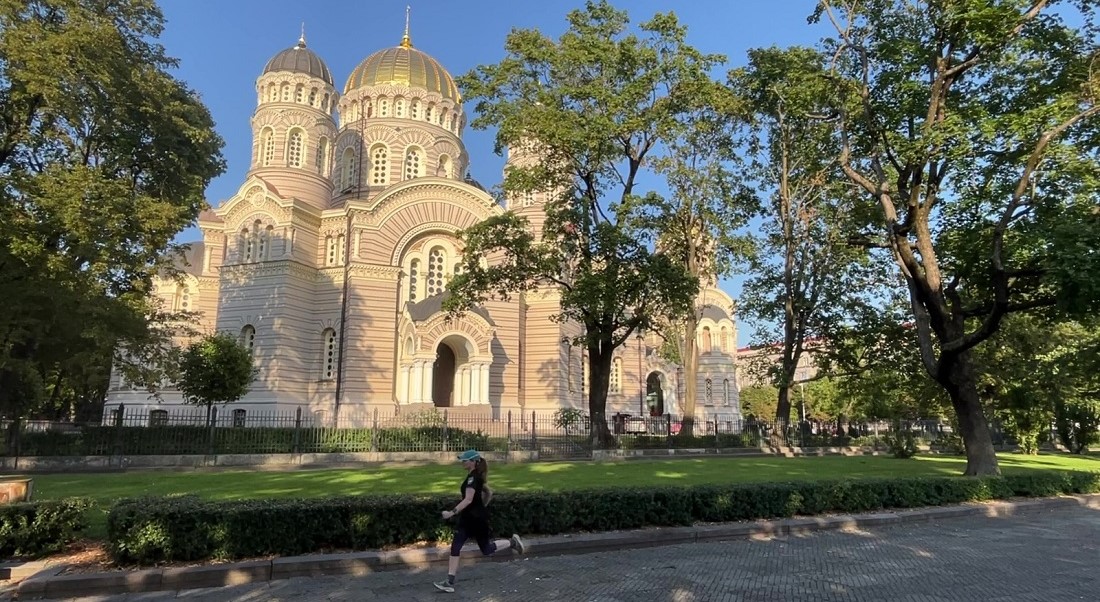
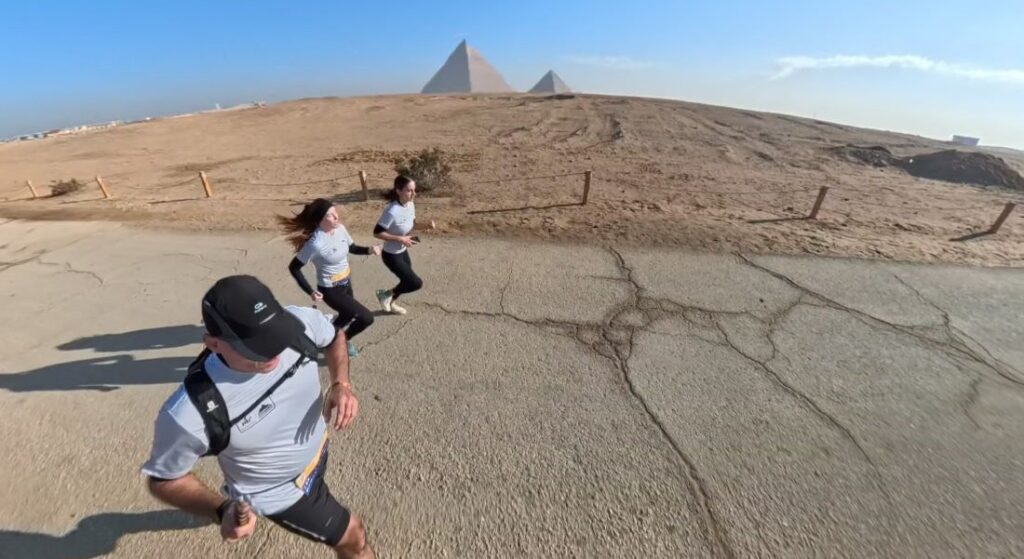
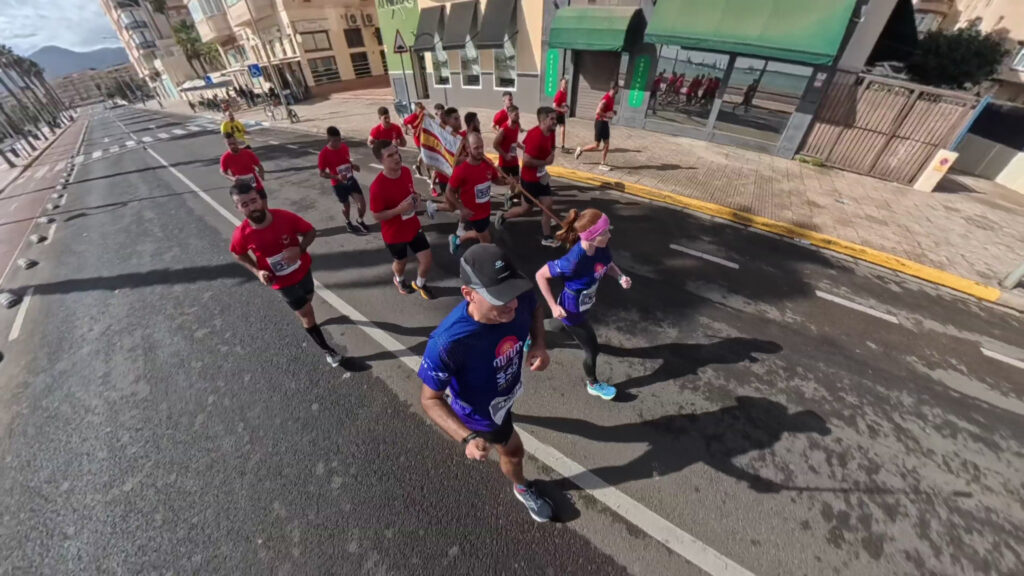
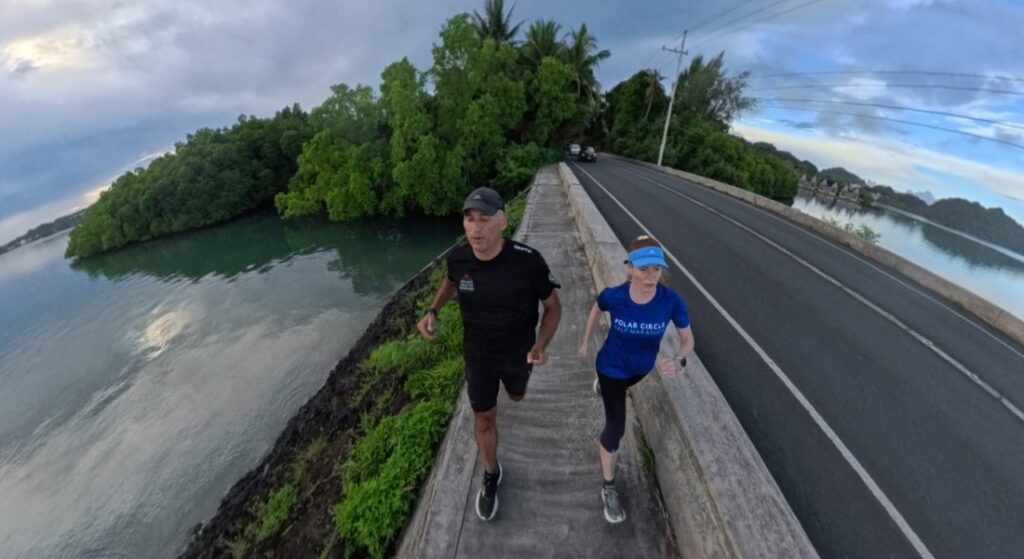
2 Comments